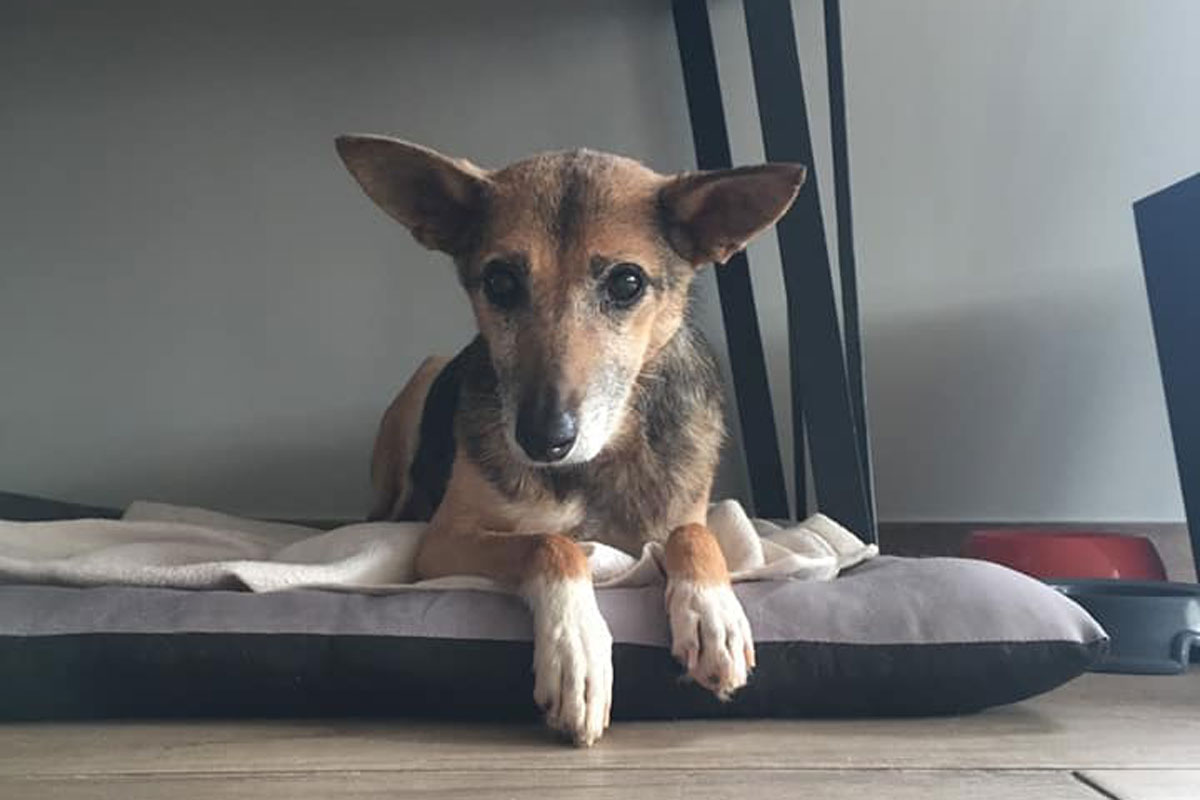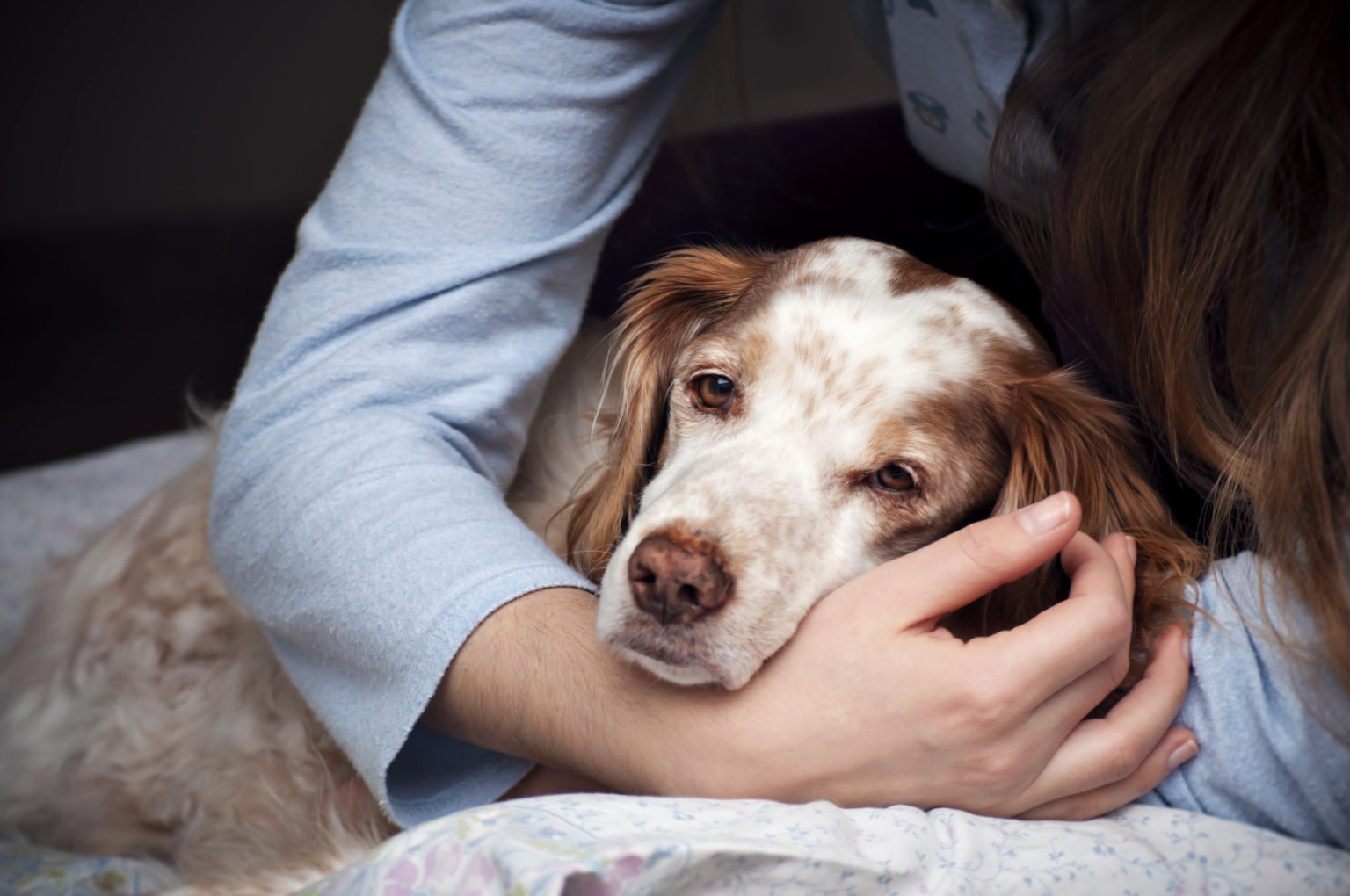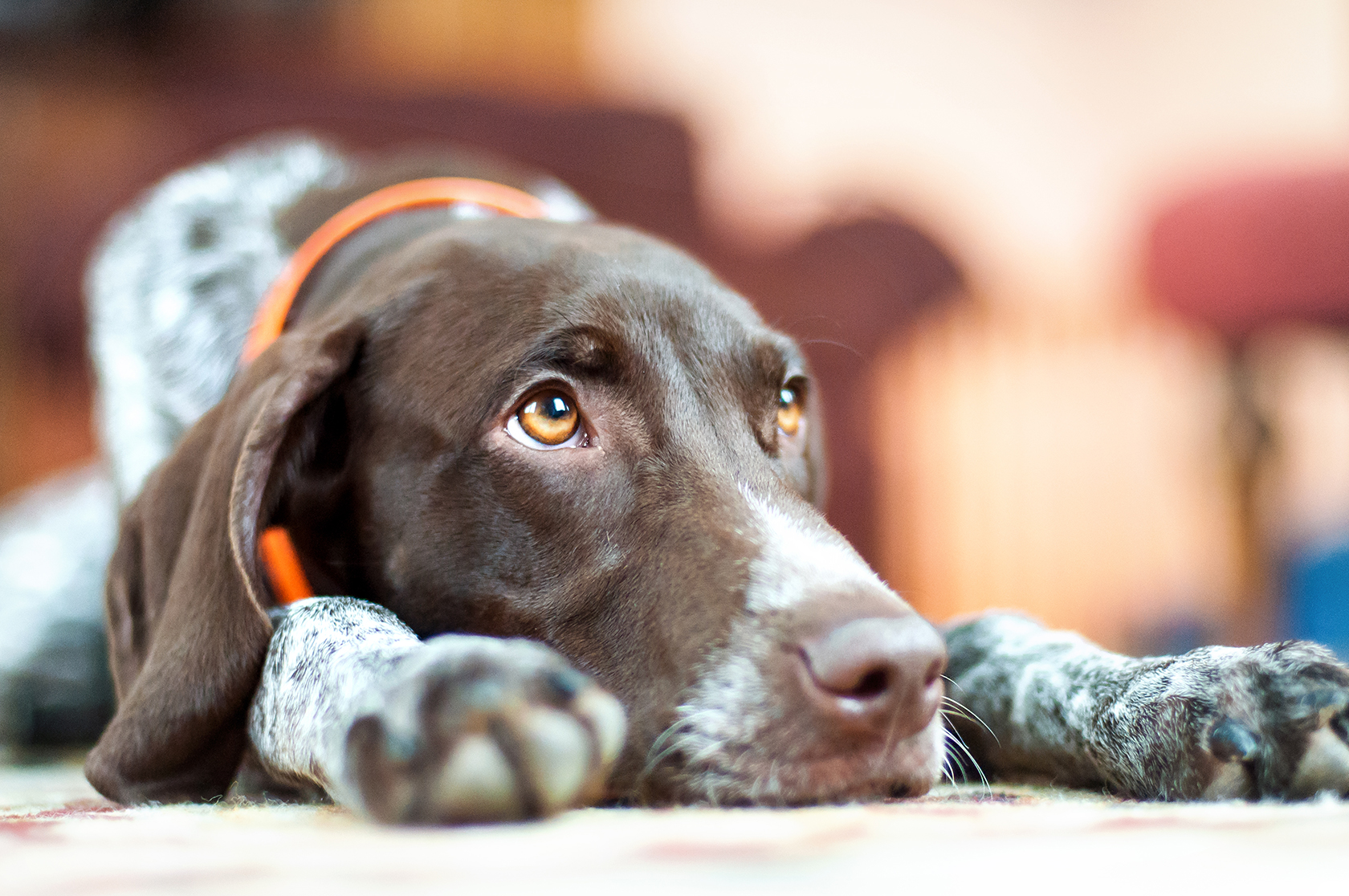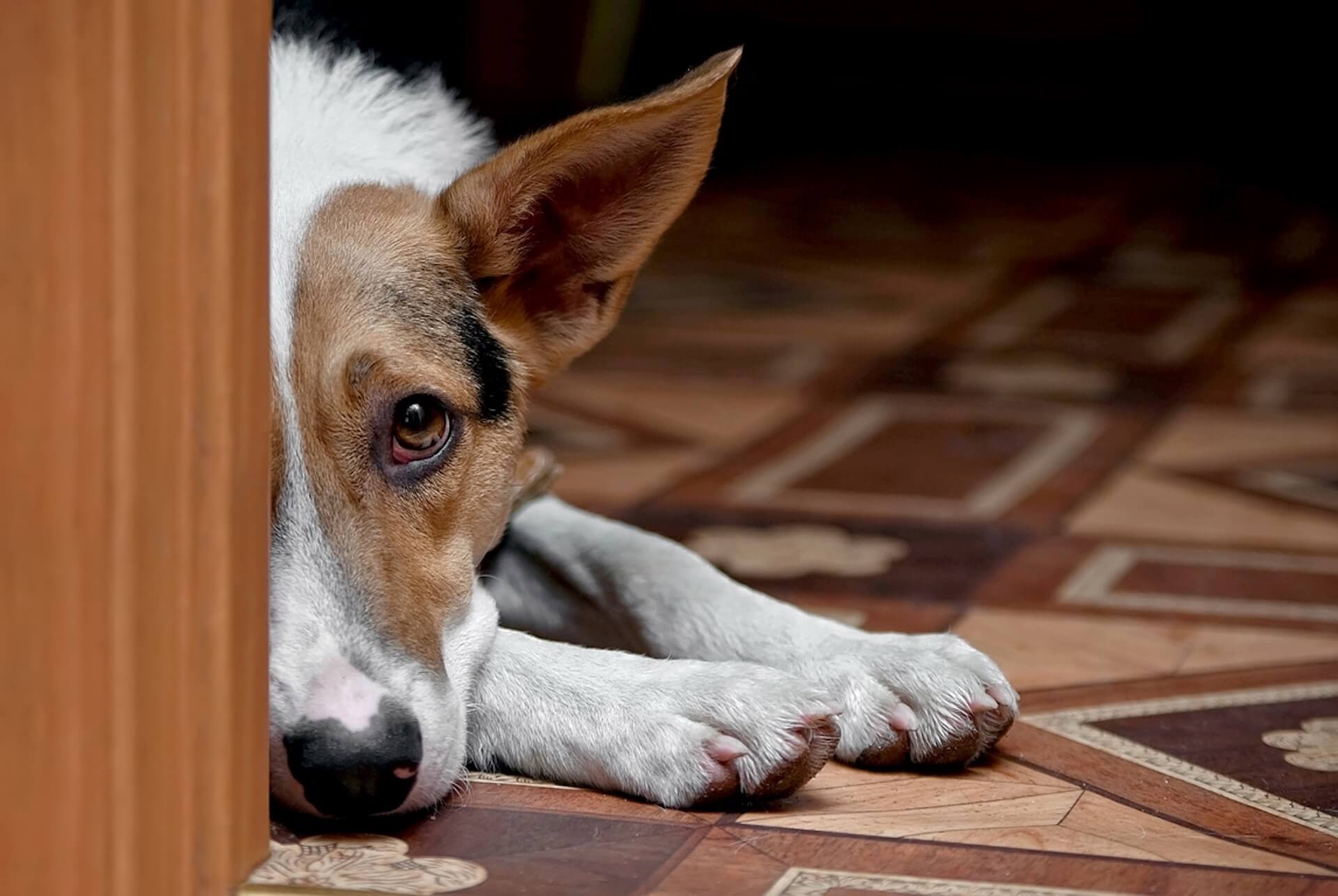If you have several dogs and one of your four-legged friends dies, this has a major impact on both humans and dogs. The owners are deeply saddened by the loss of the deceased dog. But dogs also experience emotions when they lose a buddy.
However, dogs go through a different grieving process than humans. How do you best guide a grieving dog? How do dogs actually grieve? How long does their grieving process take? What should and should not you do if a grieving dog?
If A Member Of The Pack Drops Out
The death of a dog is particularly devastating for most dog owners. Often the dog has shared joys and sorrows with the master for many years. Until the day comes when you have to put your dog to sleep and the many wonderful years you have spent together will come to an end.
The grief is often heartbreaking and it can take a long time before the boss can pick up again. The grieving dog owner is being taken more and more seriously. In the past, grief was often dismissed as “it’s just a dog”. Today that is no longer the case. Mourning for a deceased dog is no longer considered eccentric. The grieving dog process can be just like after the death of a (human) loved one. Good, grief is important for the copying process.
Dogs also have feelings of grief and loss. The grieving dog processes the death of his buddy differently than people. Some emotions in dogs resemble those of humans.
The experience differs, but for both humans and dogs, saying goodbye can be very difficult. Processing death in a good way is very important for dogs. In order to support your dog as best as possible in his grieving process, it is important to understand how this goes.
Reading Suggestion: How Much Does It Cost to Dog Taxidermy?
Every Grieves Dog Differently
When a dog from the pack dies, the dogs that are left behind face a sudden, drastic change. Every dog is different and will deal with a dead dog in the pack in its own way.
One grieving dog is not like the other. There is no standard bereavement process for dogs. It’s not there in humans either. Some dogs languish, others show no visible symptoms of grief at all. How this works in practice depends on various factors:
- How the boss handles the lagging dog(s)
- How long the dogs have lived together
- How close was the mutual bond?
- The character of the dog(s) left behind
- Whether the dog(s) saw the dead dog’s body
- Whether those left behind have had to deal with death before
How you, as an owner, deal with the loss of your dog has a major influence on the grieving process. It speaks for itself. The longer dogs have lived together, the greater the chance of intense grief.
The longer dogs form a pack together, the closer the bond grows. Whether it is good or bad is irrelevant. The more dogs are used to each other’s company, the more the dog that falls away will be missed. 
Even if the bond wasn’t friendly. Nevertheless, the closeness of the contact between the dogs certainly plays a role after death. If that bond was very strong and the dogs played very intensely with each other and did all the other “dog things” together, the blow hits much harder.
The character of the individual dog is also an important influence. If the lagging dog is very individualistic, the processing will go much faster. He may even show no signs of mourning at all. A more social dog will usually suffer much more from the lack of his buddy. An insecure dog will usually grieve more intensely and for longer than a stable(er) dog.
It also makes a big difference whether the dog left behind has seen and smelled the dead body. Dogs process death better when they experience that their buddy has died. If possible, involve your dog in putting the dog to sleep. If this is not possible, it is an option to take the body home with you, so that you can say goodbye there.
This usually happens very quickly. After smelling and seeing the dead dog, those left behind know what’s going on. This way you avoid confusion. Dogs that do not know that their pack mate has passed away experience more stress when they are suddenly gone. They then more often have the tendency to look for the dog that has suddenly gone away.
If dogs have already had to deal with the death of a pack mate, this can have both a positive and a negative impact. Dogs learn from experience. If that previous experience was a painful experience, there is a good chance that it will be the same the next time. The other way around, of course, this also applies. All factors together determine how your dog reacts.
Reading Suggestion: What is a Parti Yorkie? and What is Parti Yorkie lifespan?
The Behavior Of A Grieving Dog
Dog behavior cannot be predicted. If the lagging dog misses his buddy very much, he can express this in various ways. In general, every dog experiences stress after such a drastic change in his daily life. 
Signaling stress in your dog is important. Look out for the following signs of a grieving dog:
- Listlessness such as being pathetic in a corner/basket, etc.
- Do not or hardly want to eat/drink
- Don’t feel like playing or walking
- Excessive panting
- Biting your own tail
- Excessive scratching and/or licking (e.g. on the paws)
- Compulsive walking/running around the house
- Howling and/or barking
- Sudden Separation Anxiety
- Other Behavioral Changes Never Seen Before
If your dog shows one or more of the above symptoms after the loss of his companion, it is always wise to go to the vet. There may be another, medical, cause. Stress can cause (serious) physical complaints in dogs. Especially if your dog refuses to eat and/or drink it is necessary to get expert medical help as soon as possible
Reading Suggestion: Long Haired Akita Dogs a Rare Breed
How To Guide And Support A Grieving Dog
Guiding a dog in mourning in the right way is important. Done incorrectly, the stress associated with grieving can become chronic. With all its consequences. This happens especially when human emotions come into play. Of course, it goes through the marrow if you notice that your dog is sad.
It is heartbreaking to see a dog suffering under new circumstances. The inclination can then be great to comfort your dog. However, this is not a wise thing to do. Dogs understand little of well-intentioned human comfort. Hugging and petting a dog that is whining or panting, for example, reinforces its behavior.
It can increase his stress because a sudden overabundance of love is very confusing for your dog. There are always exceptions, of course, but most dogs don’t benefit from extra attention!
It is important not to do anything differently than you normally would. Stay calm, and positive, and be patient with your dog. Respect that he is out of touch and behaving differently. Your dog will certainly appreciate your calm and positivity.
Most dogs recover fairly quickly after the death of a pack mate. There is no fixed period. Usually, dogs pick up the thread after a few weeks. Dogs do this on their own. It’s part of their nature. Dogs mourn less than humans. Give your dog the time it needs. Remember that it is not pathetic if you do not cuddle your dog extra. He just needs rest.
Reading Suggestions: Black Dog Names:400+ Names for Black Dogs
In practice, this will not always work. You also have to deal with your own grieving process. As difficult as it is, tries to appear as normal to your dog as possible. Your dog is of no use to you if you are visibly out of balance. Do not cry with your dog. Do this to people who understand what you are going through. Don’t worry if it doesn’t always work. Nobody is perfect. Making mistakes is human. In any case, do your best to keep your composure.
If your emotions are bubbling up, isolate yourself for a while. Walk to the kitchen, and retreat to the bedroom. You also have the right to mourn, but it is better for your dog if he sees this as little as possible. The human grieving process is much more emotional. In your dog’s eyes, this kind of behavior is unstable. He doesn’t get it. That confusion can make his stress worse. Try to be as aware of this as possible.
What To Do If Your Dog’S Feelings Of Stress And Grief Last Too Long Or Worsen
Sometimes a dog can’t get out of the grieving phase. If your dog is still severely out of shape after a period of 4 weeks, it is important to intervene. You can do this by offering the dog more activities. Take an extra walk. Visit new places, where new smells can be smelled. Play more games with your dog. this depends on his interests. A ball, a search game, learning tricks, etc. are some examples.
Motivate your dog by acting happier than usual. Make it attractive. If the dog refuses a ball, you can soak the ball in chicken stock for an hour, for example. Perhaps this will pique his interest. A small lick of sausage spread on a ball (or another toy) can also do wonders
Some dog owners think introducing a new dog helps.
However, this is incorrect. Until your dog has recovered, it is not wise to add a strange dog to the pack, which is still in mourning. This also applies to you. As long as you still experience a lot of emotions about the death of your beloved four-legged friend, it is better to wait. If your own partner should die, your grief will not disappear if you remarry a new man/woman within a few weeks. That’s how it works with dogs.
If nothing seems to help and you’ve done everything you can, contact your vet. Sometimes a grieving dog needs extra help to recover and get back into balance. For example with the help of medication. There are also alternative options.
For example Bach flower therapy or homeopathy. In any case, never self-medicate. Seek help from an expert therapist or (veterinary) doctor! A dog behavior expert can also offer a solution for individual, tailor-made advice.
Everything takes time. Give yourself and your dog time to grieve. Time and patience and maintaining a normal daily rhythm are often the best remedies. The best thing you can offer your dog is rest. This heals most wounds.








